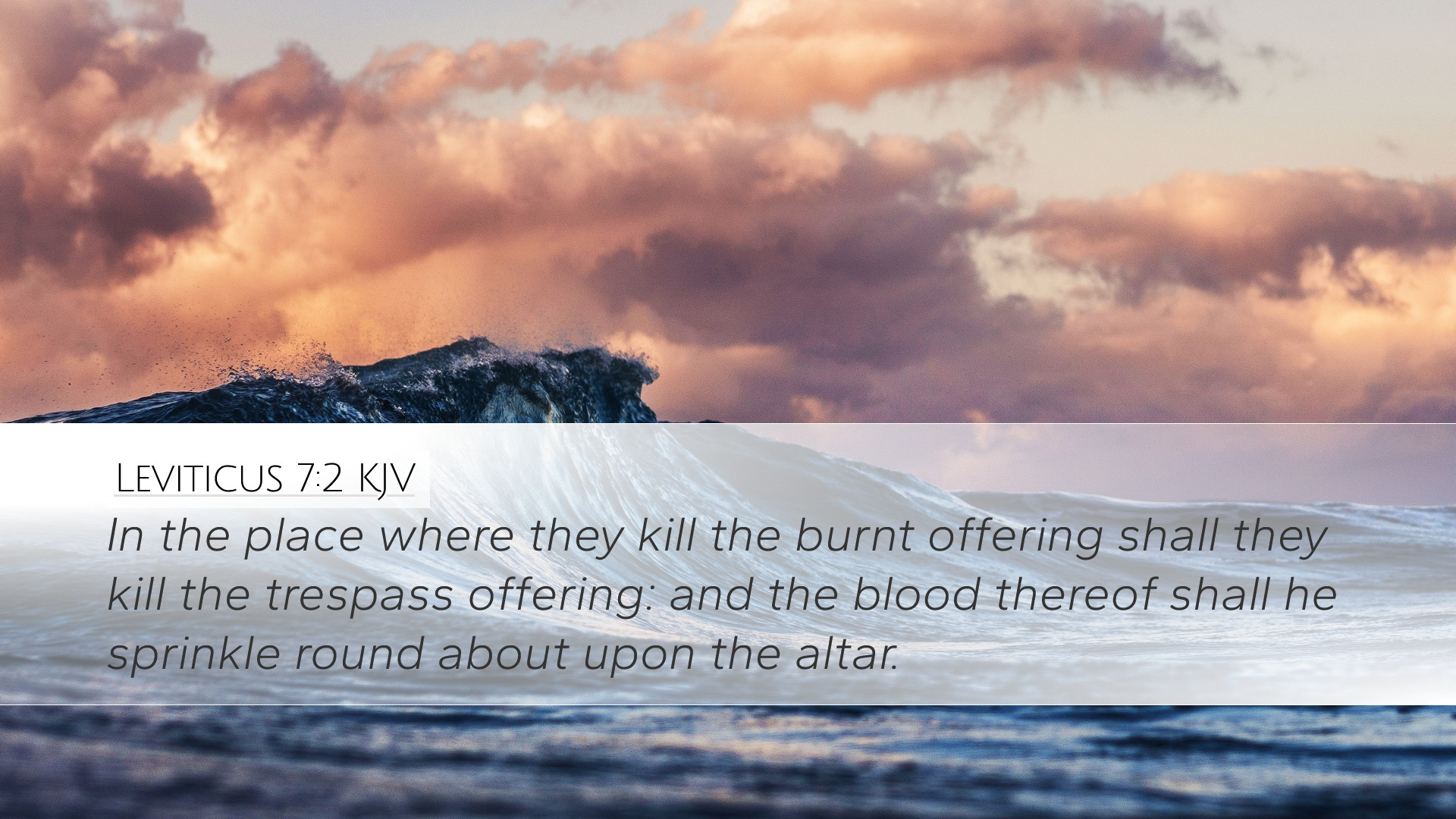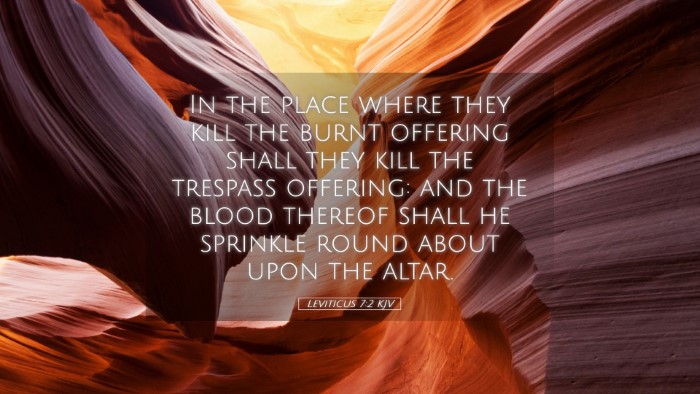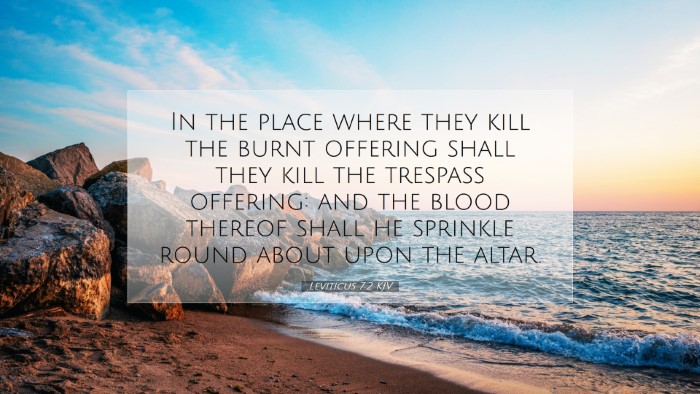Commentary on Leviticus 7:2
Verse: "And he shall bring with his hands the offerings of the Lord made by fire; the fat with the breast shall he bring, that the breast may be waved for a wave offering before the Lord." (Leviticus 7:2, KJV)
Introduction
The verse in Leviticus 7:2 pertains to the regulations governing the sacrifices made by the Israelites, specifically addressing the offerings that are made by fire. This chapter elaborates on the peace offerings, outlining the procedures and significance of the rituals performed. In analyzing this verse, we will draw insights from respected public domain commentaries, particularly by Matthew Henry, Albert Barnes, and Adam Clarke, while organizing the rich theological and practical implications for various audiences including pastors, students, and scholars.
Contextual Analysis
This excerpt exists within the larger framework of Levitical laws, which serve to guide the Israelites in their worship and relationship with God. The peace offering, discussed in Leviticus 3 and 7, symbolizes reconciliation and gratitude. In examining the sacrificial aspects, it is essential to note the emphasis on the communal nature of the offerings and the role they play in affirming the covenant between God and His people.
Matthew Henry's Insights
According to Matthew Henry, this verse highlights the importance of the ceremonial aspects of the Israelite worship. He points out that the "fat with the breast" signifies the choice parts of the offering, which were to be given to God as a mark of honor. Henry emphasizes the symbolic act of waving the breast, representing the offering being presented before the Lord as a gesture of acknowledgment and reverence.
Albert Barnes' Commentary
Albert Barnes reiterates the significance of bodily involvement in the sacrificial system. He notes, "he shall bring with his hands," emphasizing that worship involves personal consecration and the offering of one's life and efforts to God. Moreover, Barnes explores the fat's role, often considered a delicacy, indicating that God deserves the best. This act of offering was not merely ritualistic but served as a spiritual exercise in expressing dependency on God and His provision.
Adam Clarke's Perspective
Adam Clarke expands on the sacrificial system's implications for understanding God's holiness and justice. He remarks that the fat represents the vitality and strength of the animal, symbolizing the best in worship. Clarke further discusses the practicality of these sacrifices, explaining how they maintained the community's structure and reinforced collective worship and thanksgiving to God. The wave offering, as described, signifies a mutual relationship where both God and the offerer partake in the offering's significance.
Theological Reflections
The instructions regarding the wave offering in Leviticus 7:2 provoke profound theological reflections. Here are key themes that arise:
- Reverence and Worship: The act of presenting the offering emphasizes respect for God's holiness. The detailed procedure instructs the Israelites on approaching God with the honor He is due.
- Community and Fellowship: The peace offering establishes a communal meal where God, the offerer, and the priest partake, symbolizing harmony and fellowship among the community.
- Symbolism of the Fat: The fat represents not only the best of the animal but also signifies the sweetness of communion with God, as fat was considered a rich part of the offering.
- Personal Involvement: Leviticus teaches that worship is not a passive act; engagement in the offering process illustrates the active role of the worshipper in their relationship with God.
Practical Applications
For contemporary pastors, students, and theologians, the engagement with this text leads to several practical lessons:
- Honoring God with Our Best: Just as the fat of the sacrifice was reserved for God, worshippers today are called to offer their best time, talents, and resources to God.
- Engaging in Meaningful Worship: The detailed instructions serve as a reminder that our worship should be meaningful, heartfelt, and well-thought-out, aiming to glorify God.
- Community Worship: Encouraging fellowship during worship echoes the communal nature of the peace offerings, fostering unity among believers in both worship and service.
- Understanding the Holiness of God: The sacrificial system underscores the need for reverence in worship and acknowledgment of God's holiness in our approach to Him.
Conclusion
Leviticus 7:2 serves as a cornerstone in understanding the nature of worship and sacrifice within the Old Testament framework. Insights from prominent commentaries shed light on the multifaceted implications of this verse, allowing for a deeper appreciation of the Israelites' approach to God. Through the rich symbolism of offerings, contemporary believers can reflect on their own acts of worship and foster a deeper, more meaningful relationship with God. The lessons drawn here continue to resonate with the faithful as they seek to understand the sacred act of worship in their own context.


